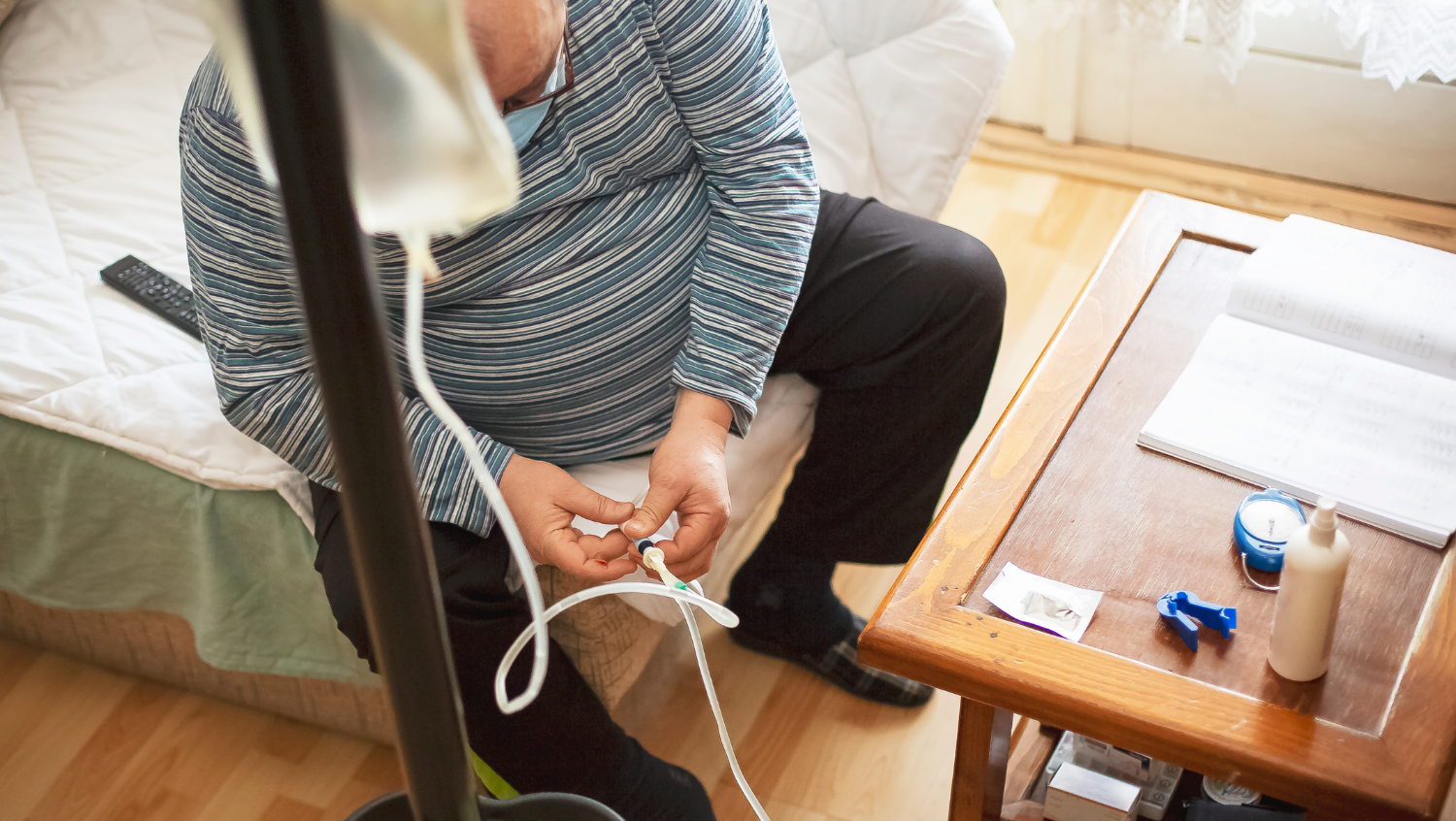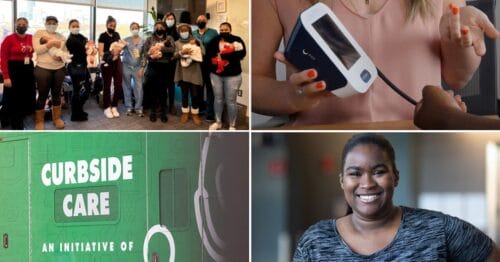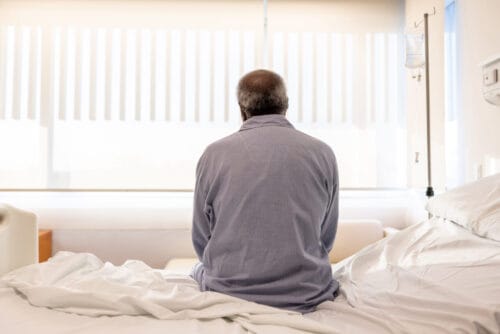Boston Medical Center Shows Expanded Home Dialysis Fosters Equity in Kidney Disease
October 27, 2023

Getty Images
The program busts myths that dialysis can only be done in large homes. At BMC, 20% of kidney disease patients are on home dialysis—much higher than the national average of 13%.
Racial disparities in kidney disease and treatment are stark. Black people account for 13% of the U.S. population but represent 35% of Americans living with end stage kidney disease (ESKD). And while 63.2% of white transplant candidates will receive a new kidney within five years, only half of Black candidates will. The other half will dialyze until a kidney becomes available — or for the rest of their lives.
Research suggests that these inequities stem less from genetics or lifestyle and more so from social determinants of health, race, and racism. Prominent organizations such as the National Kidney Foundation now acknowledge this truth and are campaigning for kidney equity for all.
At Boston Medical Center (BMC), one intervention that’s helping to close this gap is home dialysis. There are two types of dialysis that can be done at home: peritoneal and hemodialysis. Peritoneal dialysis has been most successful among BMC patients. It requires surgery to insert a catheter. Then, you attach a sterile cleaning fluid to this catheter and cleanse the blood this way. Hemodialysis can also be done from home, but it requires a large living space to store medical equipment and a trained care partner, whereas peritoneal dialysis is continuous and does not require a large living space.
“Unfortunately, there is still a perception in some places that home dialysis can only work for the most stable patients with large homes in which they can do the treatment,” says Lauren Stern, MD, medical director of BMC’s home dialysis program, the largest of its kind in Boston. “But at BMC, 20% of our patients are on home dialysis, versus the 13% national average.”
In fact, after reviewing patient data, DaVita, the largest provider of kidney care in the U.S., found that BMC had the highest proportion of Black patients on home dialysis and the smallest gap in racial and economic health disparities in the region when it comes to kidney disease. Because BMC is a safety-net hospital, a large percentage of its patients also struggle with other social determinants of health, including economic insecurity and smaller living spaces. BMC’s expansion of the home peritoneal dialysis program has largely contributed to this reduction in racial and economic health disparities related to kidney disease.
HealthCity spoke with Stern and Jasvinder Bhatia, MD, director of Outpatient Dialysis at BMC, to learn more about BMC’s unique home dialysis program.
HealthCity: How did BMC’s home dialysis program start?
Jasvinder Bhatia, MD: I’ve been at BMC for almost 20 years now, and this program predates me. The way something like this really gets started is that you have one person who is a real champion — that was former program director, Liz Abernathy. She would teach fellows and other staff members about home dialysis, and it grew into a culture at BMC where educating and promoting home dialysis is the norm. Over these last 20 to 30 years, we’ve seen patients with every comorbidity and social situation. We’ve gained a lot of experience to make home dialysis work for patients of so many different backgrounds and challenges, which has inspired us to advocate for public policy that expands access to home dialysis.
HealthCity: What are the benefits of home dialysis for patients?
JB: All dialysis is frustrating and overwhelming — especially for patients who are not kidney transplant candidates, because this is their life. The biggest benefit for our patients on home peritoneal dialysis [as opposed to hemodialysis], is that it gives them more autonomy to do dialysis their way. It’s on their own time and on their own schedule, in the comfort of their own homes. There’s no waiting for transportation to arrive, going out in a snowstorm, or sitting in waiting rooms for hours.
If we only offered home dialysis to people who we think have a 100% chance of succeeding, then we’re going to miss a lot of other patients who would otherwise thrive and not have been given the opportunity.
Lauren Stern, MD: Another benefit of peritoneal dialysis is that it’s easier for patients to travel internationally because the supplies can be delivered pretty much anywhere in the world. For example, I’ve had patients travel for weeks at a time to see family in Honduras, Haiti, China, and Jamaica. It’s also much more affordable to buy extra peritoneal dialysis supplies before a trip than to pay out of pocket for in-center hemodialysis away from home, which can cost upward of $300 per treatment. In addition, hemodialysis clinics are not present in all countries, making it difficult for many people to visit family in more remote or under-resourced locations.
HC: What aspects of patient or provider education are key to the success of a home dialysis program?
JB: In our clinic, we offer a formal education program called “Kidney Smart,” which reviews all our dialysis modalities for patients with stage four chronic kidney disease, meaning they have less than 30% kidney function. Our incredibly dedicated educators make every effort to meet patients where they are, so they offer classes at the dialysis unit, at the hospital, online, and even in public places. And they will make four or more attempts to reach a patient to schedule and remind them about their Kidney Smart class.
But as a safety-net hospital, 40% of our new dialysis starts aren’t coming from our clinic; they’re coming through the Emergency Department, often from other countries where they may have had little to no care. For some of these patients, we need to start them on hemodialysis right away, but always talk to them about home dialysis. The shock of being diagnosed and starting dialysis can take weeks to wear off, so we will go back when they are less anxious and further educate them on their options.
Provider education is also important — in fact it’s as important as patient education. When providers don’t feel comfortable, they’re certainly not going to take the baton and lead with home dialysis.
Despite wide-held belief, it is possible for people without a large home to benefit from peritoneal dialysis. At BMC, if a patient is medically a candidate for peritoneal dialysis, and they have any home at all, we will educate them on how to achieve home dialysis.
LS: A key to making home dialysis more accessible is to make sure that nephrology fellows receive sufficient education and clinical experience in home therapies during their training. When a new nephrologist feels confident in their ability to prescribe and manage home dialysis, it will ultimately translate into it being offered more widely to patients. This is a very important consideration because becoming proficient in managing home dialysis patients is predicated on having a robust clinical training in the discipline. For this reason, we’ve started a three-month home dialysis rotation for our second-year fellows, so that they gain experience and exposure.
HC: Why else do you think home dialysis is so successful at Boston Medical Center?
LS: When I interviewed at BMC in 2010, a faculty member who has since passed away, Ed Alexander, told me I should come to BMC because it’s a very “heimishe” place. In Yiddish, a heimishe person is warm, kind, and open-hearted. I said, “You’re speaking my language. I know just what you mean, and that sounds like the kind of place where I want to be.” Twelve years later, that is still the best way to explain why BMC is so special to me I’m proud to work at a place full of wonderful, compassionate physicians who have a lot of empathy for patients and are devoted to educating them.
HC: How can home dialysis address inequities in kidney disease?
LS: Despite wide-held belief, it is possible for people without a large home to benefit from peritoneal dialysis. At BMC, if a patient is medically a candidate for peritoneal dialysis, and they have any home at all, we will educate them on how to achieve home dialysis. All we need is for them to be motivated to do it. We have patients who live in tiny, one room apartments, and we have to be creative. We put their bed up on cinder blocks, we put some boxes under their bed — we work with what the patient has. Having a robust interpreter system at our fingertips has been really helpful with the education piece. The ease with which we can converse with our patients in their native languages is really powerful.
If we only offered home dialysis to people who we think have a 100% chance of succeeding, then we’re going to miss a lot of other patients who would other would otherwise thrive and not have been given the opportunity. We feel really proud of the dedication that the BMC nephrologists have shown to ensuring that our patients with chronic kidney disease are educated about home dialysis. It is the team effort that has led to our ability to expand access to home dialysis at BMC.
This interview has been edited and condensed for length and clarity.


